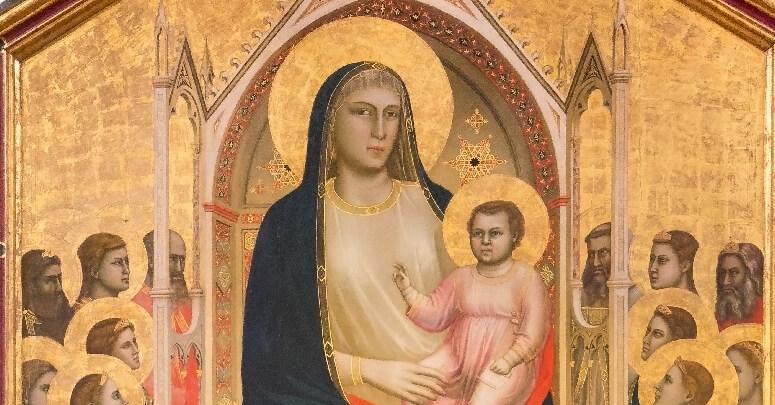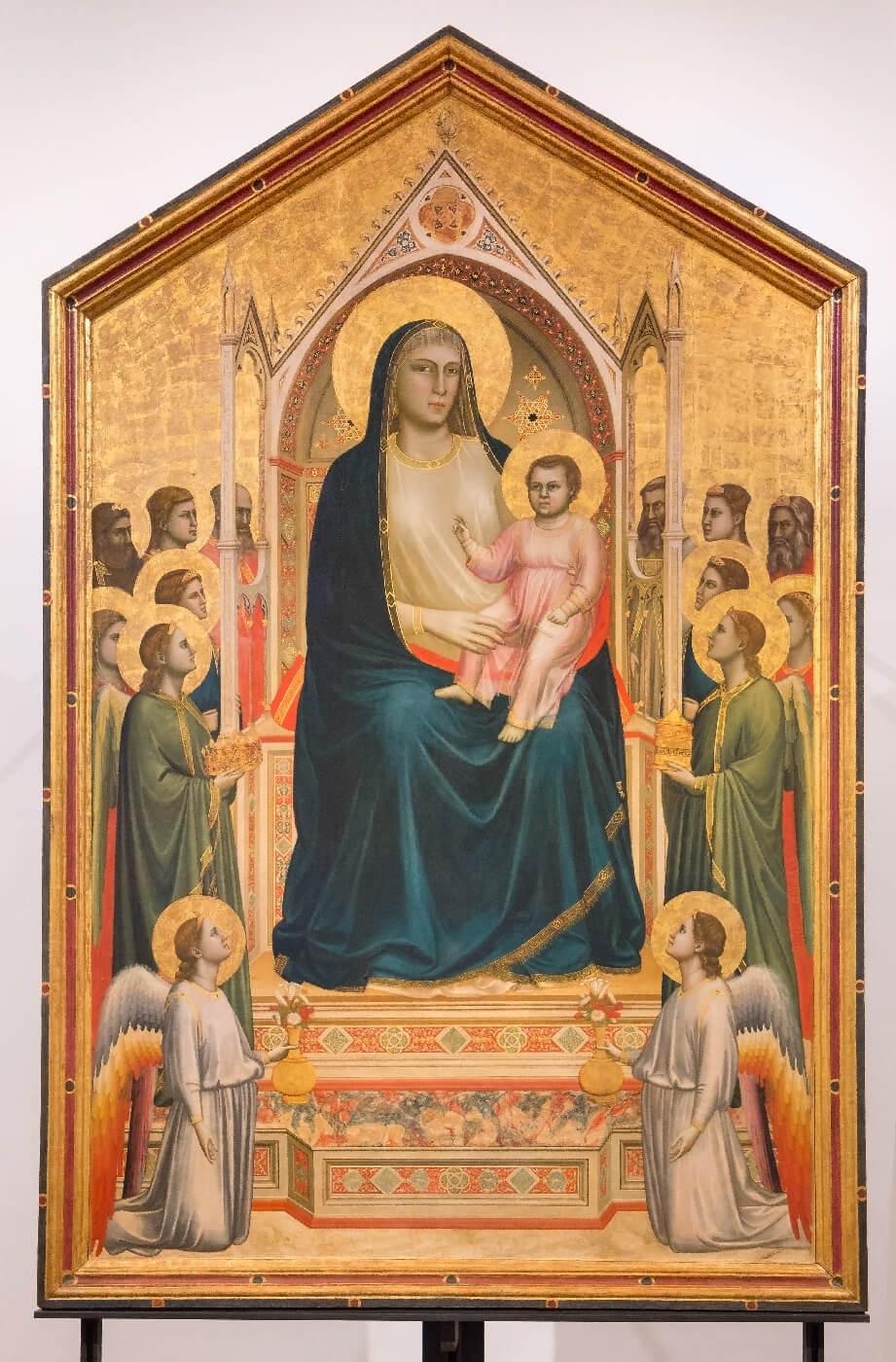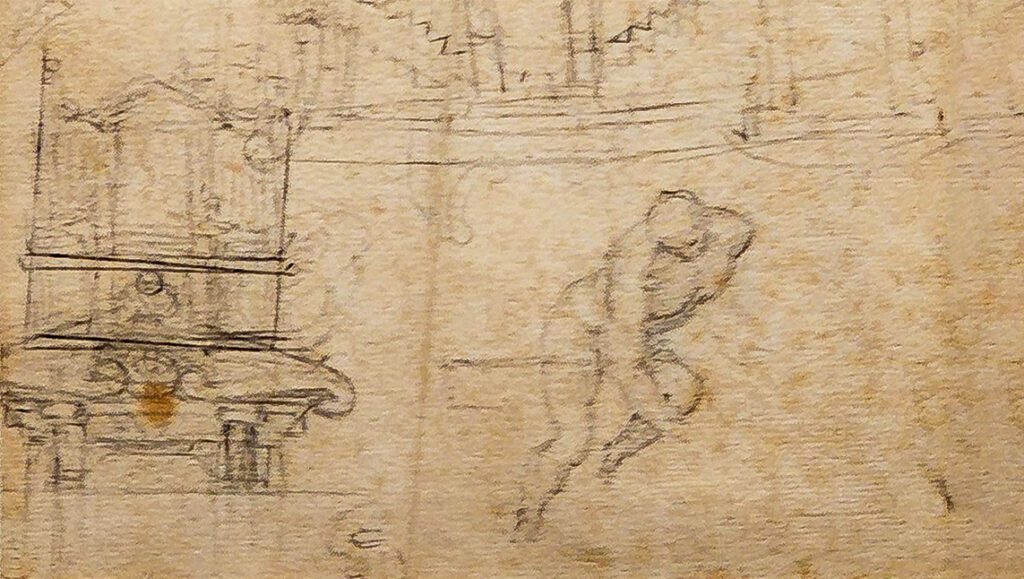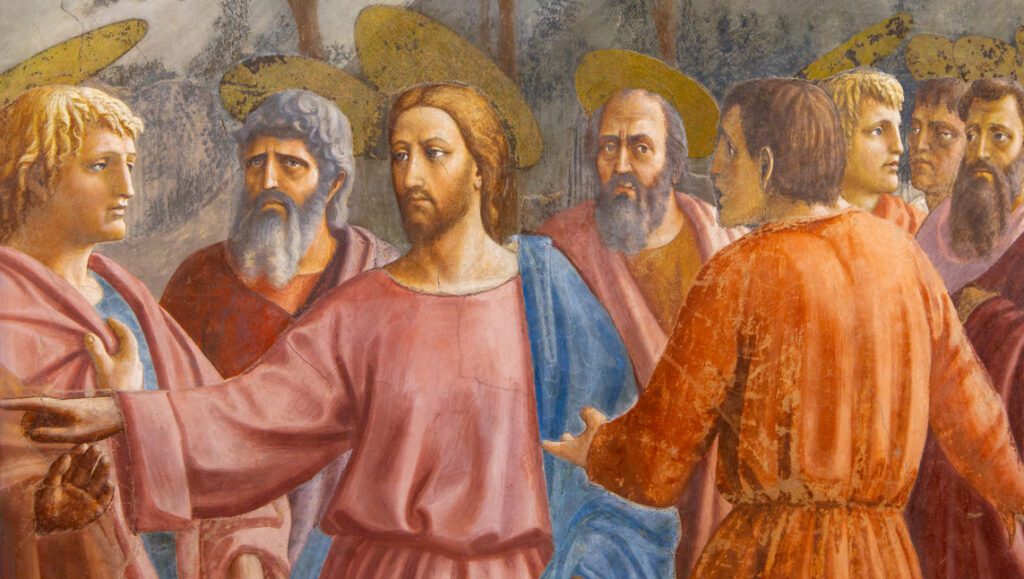
The Maestà by Giotto in the Uffizi, a museum of European art
The Maestà painted by Giotto is one of the must-see works to see on a tour of the Uffizi Gallery. The itinerary allows you to discover some of the Italian art’s masterpieces, as well as European’s, thanks to the presence in the museum of works by great international artists such as Rubens, Dürer, El Greco and Velazquez.
Florence is known as the Cradle of the Renaissance, since it is mainly between the fifteenth and sixteenth centuries that the a great cultural ferment laid down the conditions to boost an unmatched patronage phenomenon in the history of the city. It must be said, however, that the stylistic evolution that will see such personalities as Masaccio, Paolo Uccello or Piero della Francesca as protagonists, was possible thanks to the technical research of a pioneer of this new way.
The artist in question corresponds to the name of Giotto. This was the Florentine painter who, according to a very effective definition of the treatise writer Cennino Cennini, “reworked the art of Greek painting in Latin and brought back it to modernity“.
One of Giotto’s works preserved in the Uffizi Gallery is the Ognissanti’s Maestà (the Majesty of All Saints) . That was one of the most recurrent themes of Italian painting in the Middle Ages that foresees the Virgin Mary sitting on the throne and flanked by angels and saints, placed at a lower level than her.
Following what used to be the typical Florentine style, Giotto’s table is kneaded with a color that is earthy and recalls the ocher nuances of Florence’s of pietra forte houses, moulded into a solid volume that emerges – sweet but firm – from the first throne that has been properly perspective.
In fact, one of the great novelties in the Florentine artist’s painting has been that to create the perception of a concrete space, which can be inhabited by a figure. The throne here is characterised by a Gothic style architecture, although mitigated by the Roman tradition that in those years was developing the great florentine sculptor and architect Arnolfo di Cambio. It’s simply needed to think about what could be seen in Florence itself, such as the lunette with splendid mosaics created by the sculptor for the central portal of the new Florentine cathedral where another figure of the Virgin, similar to the one painted by Giotto – a Madonna with a monumental body, with glass eyes – was to welcome the faithful in the new church that was being built.

Maestà di Ognissanti, Giotto, 1305-10, Uffizi Gallery, Florence
A ‛new Virgin’
After Giotto, Italian Painting would not have been the same; the Ognissanti’s Maestà reminds us of it every time we visit the Uffizi and we are attracted by that procession of saints who, by overlapping planes, converges their attention towards Her, a “new Madonna”, made of a monumental body, a body that from that moment on begun to be three-dimensional ⟣



